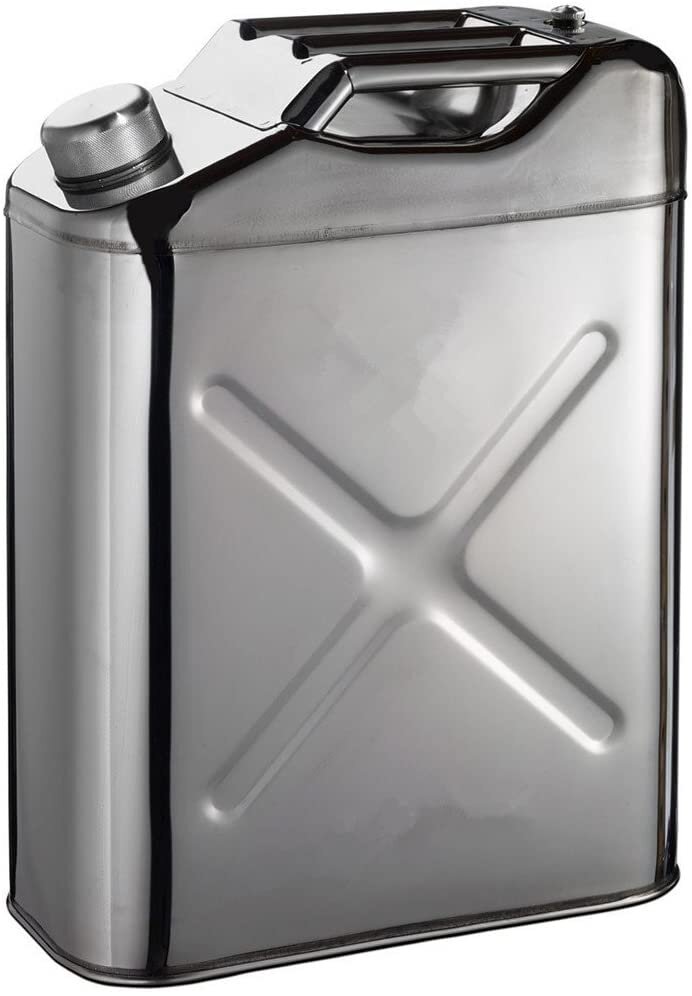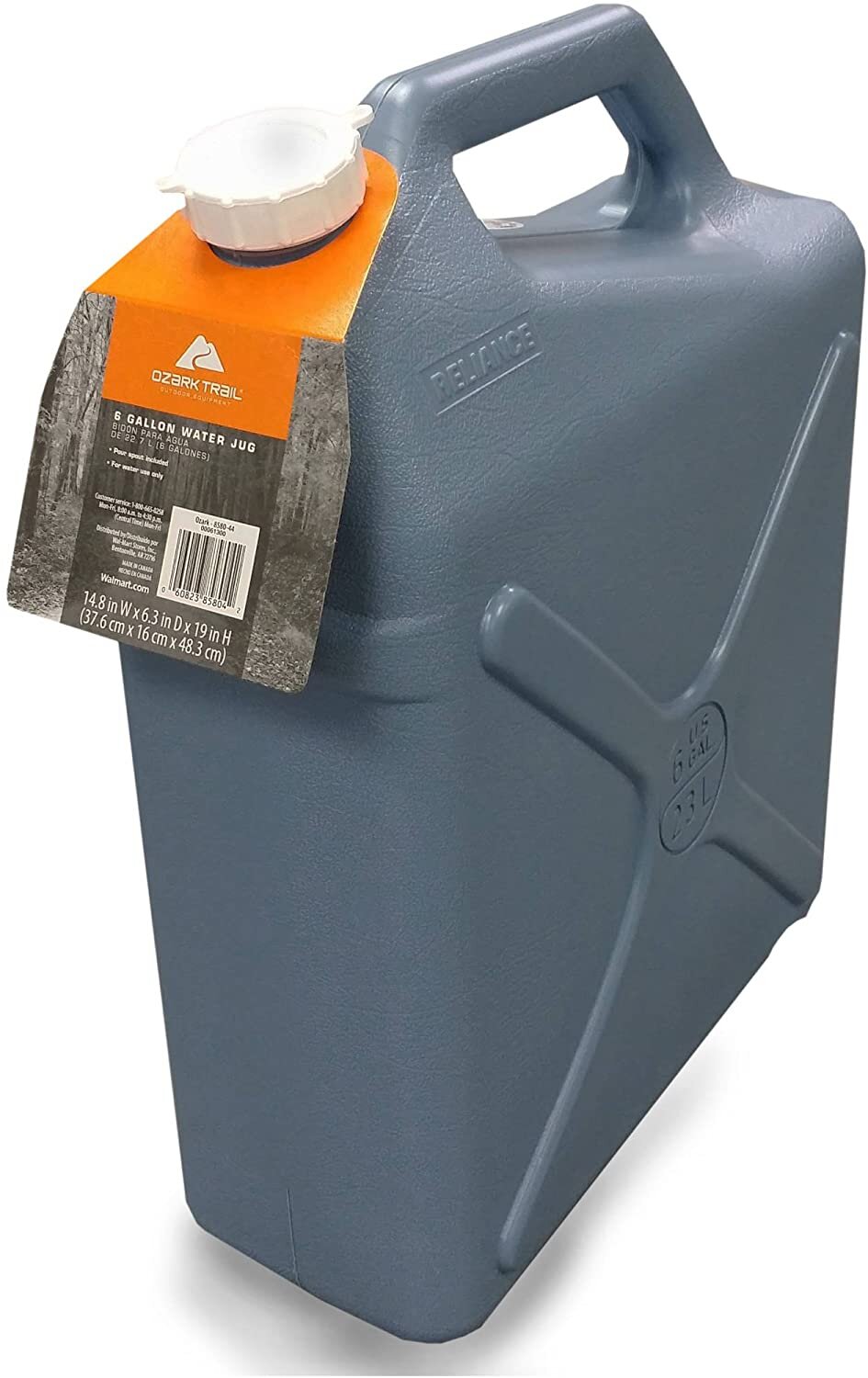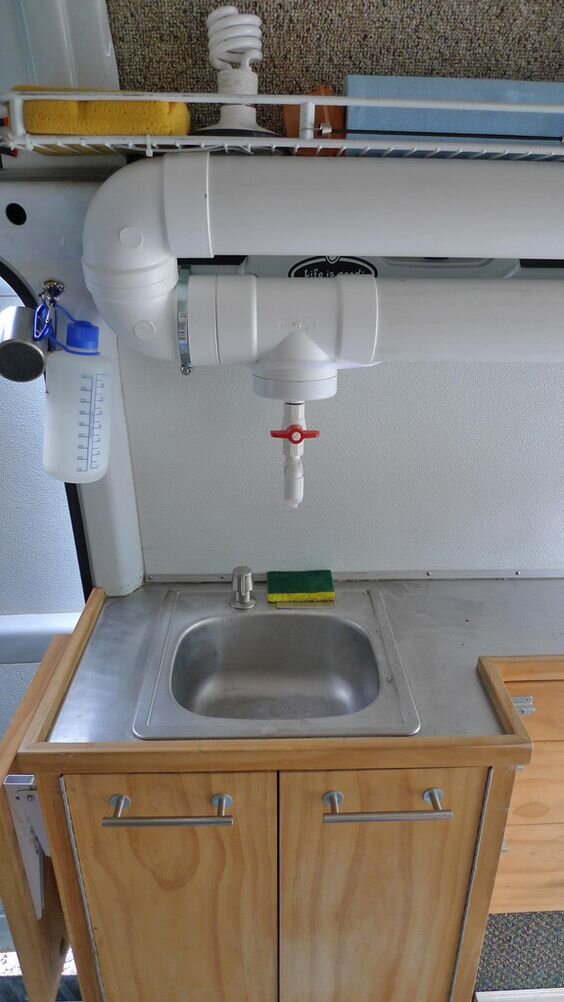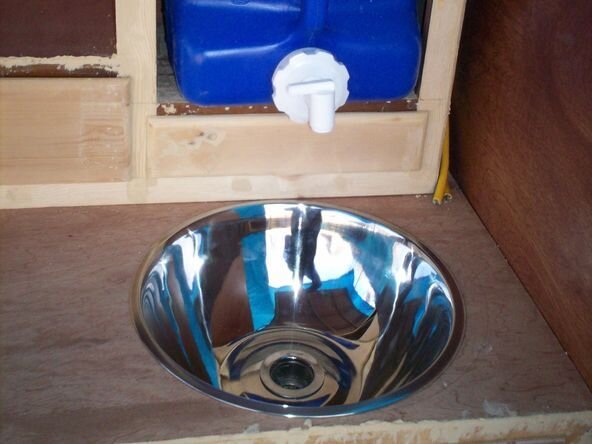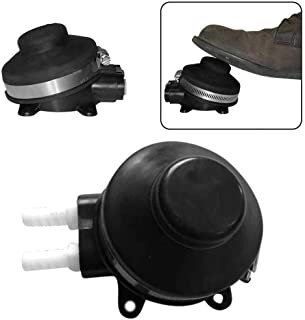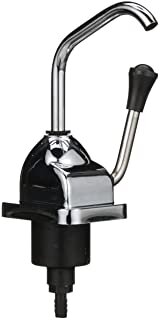vansion status: Running water!
If you are a kook and have no idea what you are doing when it comes to plumbing, we have made it easy for you. Follow along as we help make this a no-sweat process to get running water in your rig.
Having running water in the van is a game-changer. Yes, you can totally skip this luxury and be just fine, but for some reason, when I grab a glass of water from the faucet, it really makes it feel like home. Side note: It also impresses non-vanlifers when you have running water “just like a house.” ;)
When we did plumbing, we went to True Value, Ace Hardware, and Plumbing specific stores for all our builds. Home Depot and Lowe’s are just too big to have good service in this department. You could stand in that isle all day trying to piece together your plumbing situation, with or without a very nice, but just as clueless employee.
When you walk into the smaller Ace and True Value’s, you are usually greeted and asked if you need any help upon arrival. You can tell them your project, watch them grab pieces and put it together for you in seconds, and be back to the building in less time than it would take you to track down a plumbing knowledgeable employee at Home Depot or Lowe’s.
Water Storage
One of the most liberating things about vanlife is having everything you need at all times. Having enough water to survive out in the middle of nowhere is definitely one of those perks. There are two main ways for water storage in a campervan. Removable water tanks or Fixed water tanks.
Removable Water Tanks
The most basic and our favorite is a Removable water tank. We have chosen this route in many campervans, as it is the easiest and cheapest.
Advantages:
There are many different types, sizes, and combinations of removable water tanks.
Removable water tanks are generally stored inside your campervan, where it isn’t exposed to outside freezing winter or hot summer temperatures.
Small in size and modular in combination, they’re a quick and easy low-cost solution for storing water aboard your campervan.
No need for setting up some fancy fill gauge.
Low-cost and fast water storage solution.
You don’t need a special fill up station.
In places like Baja, having some of these is the cultural way to fill up on drinking water. They all fill up their reuable jugs, as well for home use. Fixed tanks in this situation can be a headache.
Disadvatages:
If you wanted a shower system, removable water tanks may not be the way to go as they will not hold enough water for showers, dishes, and drinking water.
Water is heavy. If you are unable to lift heavy things, on the regular, this might not be the route you want to go.
Removable water tanks take up interior living space.
Fixed Water Tanks
Fixed water tanks are also known as, freshwater tanks, come in a huge variety of shapes, sizes, and capacities.
The fixed tank is attached to your vehicle and thus fixed. It does not move once it is installed. It can be installed inside or outside the campervan.
If you are trying to break free from daily chores, like refilling water, a fixed water tank is going to offer you the largest capacity for storing water in your campervan.
Advantages:
Largest water storage capacity choice.
Interior living space is precious, if you have an under-mounted tank, you will save some of that living space for other items you want to bring on your journey.
So many choices of sizes, capacities, shapes to allow you the option to find the perfect size and fit for your layout and space constrictions.
Extremely durable.
Disadvantages:
You may need someone to install an under-mount.
Fixed tanks often require an installed filling point on the outside or inside of the van. You may have to make some more body cuts to the van to do this.
You will also need an overflow drain as well as a drain to drain water out of the tank when not in use.
Fixed tanks will require a water level gauge. So you know when to refill or when to stop re-filling and avoid overfilling and making a mess.
Fixed tanks are a challenge to clean. May require chemicals to clean the tanks.
The bigger your tank the more water (weight) your campervan will carry. Fuel consumption and maximum gross weight come into play here.
The refill point on your campervan needs to be accessible or refilling can be quite a headache.
You have to carry additional equipment to refill the water tank (ie: hose, adapters, in-line hose filters, etc.).
If you have the fixed tank mounted outside, you may need to add a 12v heated mat to the side of your tank to keep it from freezing in winter temperatures.
Easiest options for water: Gravity Fed
We have seen everything from gravity-fed easy water systems to recycled UV treated water. If you are just trying to get on the road, a gravity-fed water system might be the way to go. All you need is to get your freshwater holding tank higher than your point of use. This means that gravity will feed your water to your cup rather than an electric pump. The hardest part about this is mounting and securing the water while driving. When we had a basic build in Australia and New Zealand, we just had our water container live on the floor, while we drove. Then when we needed it, we would put it on a park bench or upon our shelving, while in use. This was elementary, but it worked, it wasn’t terrible, and it is easily replicable! Here are some examples from a google image search.
Foot and hand Pumps
If you aren’t into feeling like you are camping every day, by moving your water dispenser up and down to use it, but you want some sort of water faucet and sink set up. Then, the next easiest install would be a foot pump or hand pump. These are great because they require no 12v power to pump water, only manpower. If you are trying to be stealth, manual pumps, as well as, the gravity-fed water system are great because they are silent relative to the 12v pumps that are pretty loud if a stranger walked by the van at night while you grabbed a glass of water.
12v Sink pumps
After living in a van for two years traveling abroad and deciding we loved this lifestyle, we agreed that having a sink and faucet would make the van life more comfortable for the long term. We went with the ShurFlo pump, the accumulator, and a very simple set-up of removable BPA Free Reliance Jug water canisters.
DIY SINK IN A Budget Build
In our VW $6,000 budget build series, on YouTube, we wanted a simple, easy, and budget friendly plumbing set up that allowed us to have as much running freshwater, as possible without compromising too much space. We show you how to have a minimal, cheap, but luxurious vansion status of running water! Check out the write up here.
YouTube Tutorial
We’ve made a YouTube tutorial here showing you an easy DIY solution to bringing in the luxury of plumbing into the van. Follow along to easily run all your plumbing in your build. We have done this style in multiple van setups and it is easily our favorite setup.
Water Filters
There are many different ways to filter your water in the van. After many years of filling up with drinkable water only, we have finally added a filter to the system. We are pretty happy with the ease of the install and that we now have a filter in our system! Check out how easy the install was.




